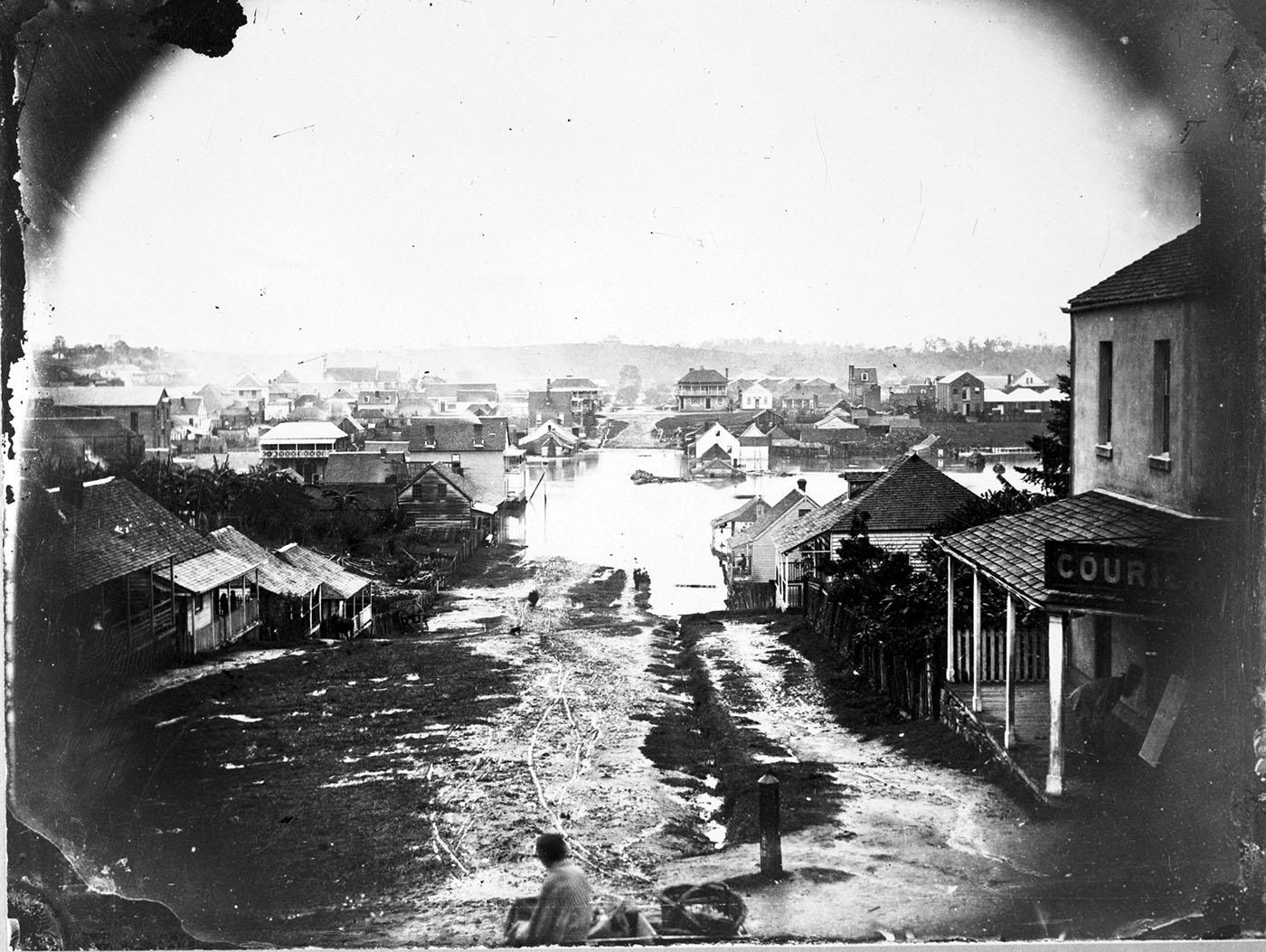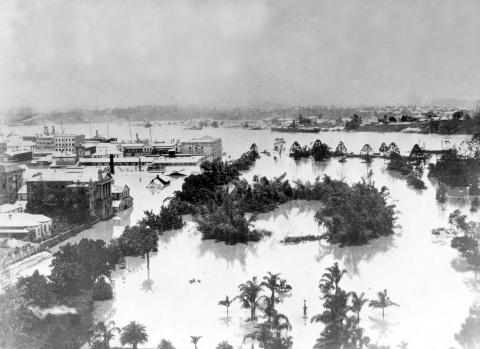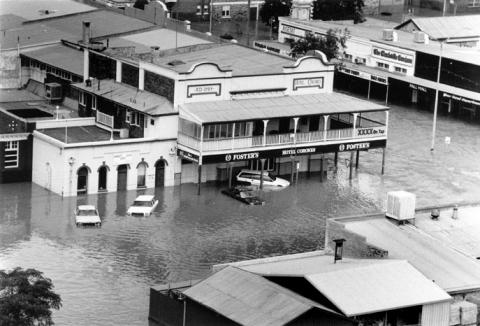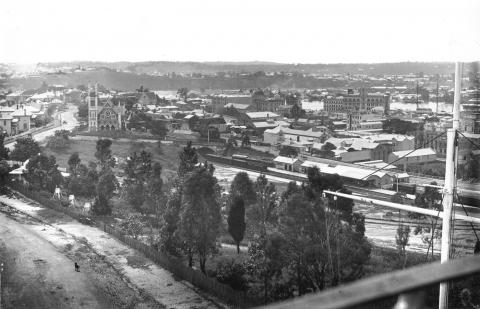
- News of the day
-
The Floods
[…] The Brisbane River, though very broad at the town bearing the same name, rose to such an extent as to flood most of the principal stores on its bank, and the backwater which flowed up the numerous creeks immersed such places as were within reach.
The damage done by the flood at Brisbane may be summarised as follows: -
Amongst the mishaps which occurred was almost the entire destruction of the Ship Inn, caused by some of the piles on which it is fixed, giving way, and so dragging down a great part of the building.
At Milton, Kangaroo Point, and South Brisbane, a large proportion of the land was under water. In the latter place boats plied in all the streets. Many houses were covered all but the roofs; and, in many more, the water had with equal completeness, expelled every other tenant. Men, wading and swimming, were to be seen in various directions, at the risk of their lives, trying to get their own or their neighbour’s property to a place of safety. The hotels known as Donivan’s, Nolan’s, Molony’s, McQuaker’s etc shared the same fate with their neighbours, and neither gave welcome nor hospitality.
- Background
-
Looking north along Charlotte Street from the corner of George Street during the flood of 19-22 March 1864. To the right of the frame you can see the sign for the Brisbane Courier newspaper office.
The area itself was known locally as Frog's Hollow. An area that Raymond Evans, in Radical Brisbane: An Unruly History, describes as being at the time:
"[...] dilapidated, unsanitary zone was [...] associated with moral decay, for it was the home of Brisbane's red light district, with its cluster of brothels in Margaret Street, owned by Mary O'Brien and Marie Naylor, as well as Brisbane's small Chinatown, located virtually at the centre of Frog's Hollow, along Albert and Mary Streets. Here, Chinese shops, residences and boarding houses subsisted alongside gambling rooms, opium parlours, pubs and sly-grog shops. To these 'hot-beds of crime and vice' it was said, 'prowling gangs of wolf-like larrikins' were attracted like magnets, mixing with a 'filthy swarm of cursing slatterns' and young blue and white-collar workers 'out on a spree.' The area was forbidden territory, exciting, dirty and dangerous; and, in any one year, yielded up hundreds of charges of 'obscene language,' disorderly conduct and riotous behaviour [...] due to the over-policing of its streets."
From: Evans, Raymond and Carole Ferrier with Jeff Rickertt (eds.) Radical Brisbane: An Unruly History, Carlton North, Vic., Vulgar Press, 2004
/153.0251289,-27.4724993,7/450x450@2x.png?access_token=pk.eyJ1IjoicXNhLWRpc2NvLXFsZCIsImEiOiJjamJmdTgyZXEyeWNjMnlxZm8xcmtieHgxIn0.lmT9J5tTPKGuuccQgCVSAg)



